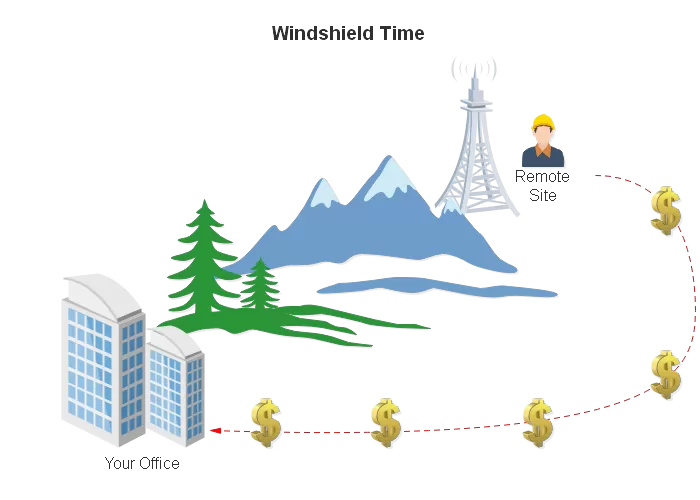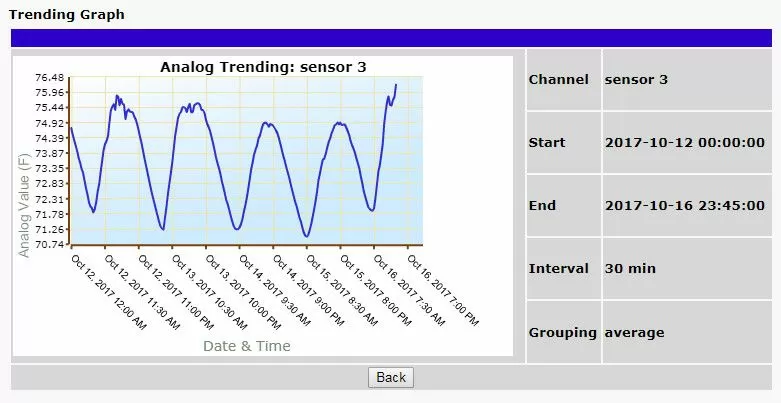Check out our White Paper Series!
A complete library of helpful advice and survival guides for every aspect of system monitoring and control.
1-800-693-0351
Have a specific question? Ask our team of expert engineers and get a specific answer!
Sign up for the next DPS Factory Training!

Whether you're new to our equipment or you've used it for years, DPS factory training is the best way to get more from your monitoring.
Reserve Your Seat TodayWhen a light beacon at the top of a communications tower goes out, the Federal Aviation Administration (FAA) must be notified immediately and the beacon repaired swiftly or hefty penalties will have to be paid.
Also, with the beacon light out, your tower becomes a hazard to low flying aircraft. Therefore, tower lights must be monitored. Lack of monitoring can potentially cost tens of thousands of dollars in fines if outages go unreported, or even greater losses if an accident were to occur.
Monitoring your beacon lights is mandatory, but there are two different ways you can go about it: deploying a remote monitoring system or hiring 24 hour staff.
As an experienced provider of network remote monitoring, we - at DPS - have been helping many clients through the last 30 years, and we know that remote monitoring can give you confidence that your revenue-generating equipment is operational and online.
However, we also recognize that sometimes remote monitoring devices might not be the best option for you. Independently of what choice is better for your scenario, you need to make sure you're making a conscious choice.
So, before making up your mind, learn the pros and cons of automatic indication and hiring 24 hour personnel.
The Federal Communications Commission (FCC) has several rules for antenna structures to ensure aircraft safety. Some of these rules are:
Sec. 17.47 Inspection of antenna structure lights
"The owner of any antenna structure which is registered with the Commission... Shall make an observation of the antenna structure's alarm system designed to detect any failure of such lights and to provide indication of such failure to the owner..."
Sec. 17.48 Notification of extinguished lights
"The owner of any antenna structure which is registered with the Commission... Shall report immediately... any observed or otherwise known extinguishment or improper functioning of any top steady burning light or any flashing obstruction light... not corrected within 30 minutes..."
Not abiding to these rules will result in heavy fines and liabilities upon the tower owner.
No matter the size of your network or how many sites you may have, remote monitoring starts with a Remote Telemetry Unit (RTU) deployed at each of your remote sites. The RTU's job is to monitor your beacon lights, as well as anything else you need - such as temperature, doors, motion sensors, humidity, and critical equipment alarms.
Your RTU should be able to send you instant notifications via email, text message, or voice messages. This is very important because you need to notify immediately the FAA if your beacon lights go out, and take immediate action to turn these lights back on.
There a number of advantages of having a remote monitoring system. Some of these are:
The fact that you can be able to access your beacon lights status from practically any place makes it easier for you.
This means that you don't need to be at your tower site - you don't even need to be at your work place for the most part - to check the status of your lights and any other equipment that you're monitoring.
This is especially useful for situations with harsh or dangerous environmental conditions, or where a single technician or team must visually monitor multiple beacon lights located at multiple tower sites.
For most remote monitoring systems, all you need to have is a computer and internet to be able to access your system's interface, and you'll be good to go.
The RTU on your remote monitoring system collects a lot of data with its discrete, analog, and other specialized inputs, and that helps to build your situational awareness of your beacon lights that might be hundreds or thousands of miles away. Based on this data, you'll realize that you need to take action.
Imagine that you have a commercial power failure at your tower site - affecting your beacon lights. You're remotely watching your backup battery levels drop, and - at a certain point - it's time to turn on the generator.
Most RTUs nowadays have control relays outputs. With them, you're able to remotely activate just about any piece of equipment.
In our generator example, you're able to turn on that generator without even getting up from your desk. You'd be saving time, labor expense, fuel, and truck wear and tear.
Another benefit of having remote control equipment is that, with a RTU smart enough to take action, you don't have to manually operate a control relay.
You'll find different trade names for the technology, Derived Controls for example, but what matters is that you can pre-program rules for each control relay. Whenever the conditions you specified are met, your RTU will automatically activate (also referred as "latch") that control relay.
Going back to our generator example, you wouldn't be required to use the RTU interface at all. Commercial power would fail, your batteries would gradually drain, and - when your remaining batteries hit a pre-programmed low threshold (20% for example) - your RTU would latch the relay and turn on the generator to keep your beacon lights on. You'd still get a notification of each alarm condition and the relay activation, but your RTU won't allow the site to go dark if you aren't paying attention.
By having a remote monitoring and control system, you'll be able to remotely connect to all of your gear - not only your beacon lights - right from your desk. Instead of paying your technicians to jump in a truck and waste time, fuel, and money, you can have them remotely access your equipment quickly from the central office, them move on other projects.

Also, another point to keep in mind is that by preventing a single outage at your tower sites, your monitoring equipment is already paying for itself.
An efficient remote monitoring system is a tireless protector of your network. It doesn't take time off, it doesn't go on vacation, or call in sick. It works 24x7x365.
On the other side of the coin, there are disadvantages as well. Some of these are:
In the event that your network goes down for some reason, such as power failure, you won't be able to access the status of your monitored equipment.
This is specially challenging because you'll lose visibility over your beacon lights, and won't be able to know if they are working properly or not. If this were to occur you may need to send personnel to the site to visually monitor your beacon lights.
Using a remote monitoring system can bring you some security threats, such as hacking. If malicious people are able to crack the code and hack into your system, they can steal vital information as well as take control of your remote site through control relays.
Therefore, you need to keep that in mind and make sure your system has reliable security features to deal with these kinds of threats.
Apart from having a remote monitoring and control system, you can keep an eye on your beacon lights by simply sending people physically to your tower sites to make sure your lights are on and everything is working as its supposed to.
When you have techs responsible for visually monitoring your beacon lights, you don't have to worry about some costs that comes with a remote monitoring system. Some of this costs are:
Maintenance
A major expense that you'll avoid by choosing to have techs visually monitoring your beacon lights is the maintenance of monitoring equipment. Just like a vehicle, monitoring equipment needs to go through maintenance in order to make sure everything is running smoothly - and vendors don't offer this service for free.
Licensing fees
There are two major types of train all the staff involved with your beacon lights monitoring. Especially if you have to pay for training.
When you have a dedicated team to keep an eye on your beacon lights, no additional training is required, because they won't be using any new system to perform this task.
Not having a dedicated remote monitoring system means that you won't have to deal with tech support when problems happen with your devices.
From the companies that offer tech support, many do so by making you pay for it. This can add up pretty quickly, especially if you're paying by the minute.
Not to mention having going through an automated voice mail even when during an emergency, having to deal with different time zones from overseas tech support, and other challenges like that.
This is one of the biggest disadvantages of having a person responsible for monitoring your beacon lights.
24-hour shifts, or even 12-hour shifts, is simply too long for someone on monitoring duty to maintain constant vigilance. You'll need to hire a team of techs to perform this task, so you'll be looking at more costs - not only with wages, but providing trucks and fuel for each person as well.
Having staff at your tower sites to monitor beacon lights only means that action will be taken after the lights go out. They'll only intervene after visually noticing that the tower went dark.
There's no way to identify small issues that can grow into bigger problems, leading beacon lights to go out, with little or no downtime.
With a staff that will only act out after the beacon light goes out, you probably won't have a way to keep data history for a trend analysis.
Trend analysis allow you to identify problem areas and eliminate recurring problems. With access to a complete history of beacon lights outage events you can spot trends that can flag a problem or present an opportunity to optimize conditions.

In a nutshell, monitoring equipment might be better suited for you if you have multiple remote tower sites, where sending techs to watch over beacon lights would be impracticable. So, if you have one or just a few tower sites to look over and they're relatively close and easy to reach to in a daily basis, hiring 24-hour staff can work for you.
FCC has very strict rules for tower lights, and if you think that the investment on a remote monitoring system will be the best case for your scenario, remember that you need the most efficient system possible in order to avoid fines and liability.
As a company that specializes in custom remote monitoring and control solutions, we want you to be able to make a wise investment - when you make an informed decision up front, you'll reap future rewards of your wise decision later.
The first step before implementing a remote monitoring system for your beacon lights is to know what is absolutely essential an effective system. So, to help you with that, our experts put together the Network Alarm Monitoring Fundamentals white paper.
This white paper is an introduction to remote monitoring, where you can get fast answers to help you create an effective system that is customized to fit your network. If you want to get started with a remote monitoring and control project, download your free copy of the Network Alarm Monitoring Fundamentals.

Morgana Siggins
Morgana Siggins is a marketing writer, content creator, and documentation specialist at DPS Telecom. She has created over 200 blog articles and videos sharing her years of experience in the remote monitoring industry.